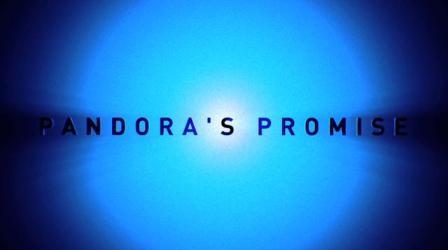Pandora’s Promise
Pandora’s Promise is a pro-nuclear propaganda documentary released in the U.S. in July of 2013. The documentary featured the controversial issue of the history and future of nuclear power, debating what some suggest as the most stable and secure source of power in modern civilization. Nearing the end of its design life, U.S. nuclear fleet and coal production combined represent close to sixty percent of the nation’s power supply. Many raise concern as to advancing technologies and the implementation of security and maintenance of existing operations at these large plant sites.
I felt that the filmmaker’s strategy behind “Pandora’s Promise” was to manipulate environmentalists’ testimonies to the extreme to persuade the general audience. I researched environmentalist, Michael Shellenberger’s, and found that he once was against the use and facilitation of nuclear energy after all the casualties and effects of Chernobyl radiation.
As a critical thinker, I am skeptical to accept that environmentalists, with the experience of Shellenberger and others interview in the documentary, believe that they are 100% pro-nuclear. Like most propaganda films, this one had “cherry-picking” arguments that were intentionally included to work in favor of their plea.
The documentary also failed to recognize the consequences from Chernobyl, undermining the soaring cases of cancers in regions near the impact of radiation. Environmentalist, Mark Lynas, asserted that the Fukushima accident would not cause any damages to peoples health when just the opposite had happened in reality. A report of the United Nations Scientific Committee on the Effects of Atomic Radiation (UNSCEAR) published, “a collective whole-body dose of 3.2 million person-rem to the population of Japan as a result of the accident: a dose that would cause in the range of 1,000-3,000 cancer deaths.”
The film featured the Integral Fast Reactor, a metal-fueled fast breeder reactor, to be the answer to all nuclear power’s problems with the argument that they consume their own waste and are virtually “melt-down proof” -while failing to address the plethora of problems associated with those types of reactors.
https://www.youtube.com/watch?v=bDw3ET3zqxk
Just incase you have not had a chance to view the movie the link above provides you with the trailer for the movie.
“Nuclear energy is such a polarizing issue that the films it inspires tend to play to the extremes. Yet it is a complex subject that does not lend itself to a simple black or white treatment. A film that gives the question of the merits of nuclear energy the respect that it is due would not shy away from the messy middle. It should instead provide a sound framework for how viewers should think about the debate and assess the available facts in order to come to their own decisions”.
The italic quote above, I found while surfing the web, summarizes my personal opinion on the documentary. I found the documentary to be extremely bias and persuasive.
“The documentary tries to make its case primarily by impressing the audience with the significance of the personal journeys of these nuclear power converts, not by presenting the underlying arguments in a coherent way”.
The more I research the topic the more I seem to discover inconsistencies. For example:
“Gwyneth Cravens, when prompted by the interviewer about the leak of tritium from the Vermont Yankee nuclear plant, stated that someone would get more radiation from eating one banana than from drinking all the water coming out of the plant. Well, I thought I would double-check this one. The dose from eating a single banana is about 0.01 millirem. Entergy, Vermont Yankee’s owner, estimated in a 2011 report to the NRC that the leak detected in early 2010 released 2.79 curies of tritium into groundwater. Assuming someone consumed all of this tritium in the form of tritiated water, that person would receive a dose of 185,000 millirem. Ms. Cravens was only off by a factor of twenty million”.
In conclusion, I found the documentary to be informative but not necessarily factual. A great situation would be to have two teams (for vs. against) nuclear power in a debate room. An independent party should check and verify that all data is presented accurately and fairly. That is the only way I foresee and educated opinion made by the public/government.
REFERENCES:
http://www.cnn.com/2013/11/10/opinion/pandora-nuclear-westinghouse-roderick/index.html
http://www.beyondnuclear.org/pandoras-false-promises/
http://en.wikipedia.org/wiki/Pandora’s_Promise
http://www.cnn.com/SPECIALS/world/cnn-films-pandoras-promise

